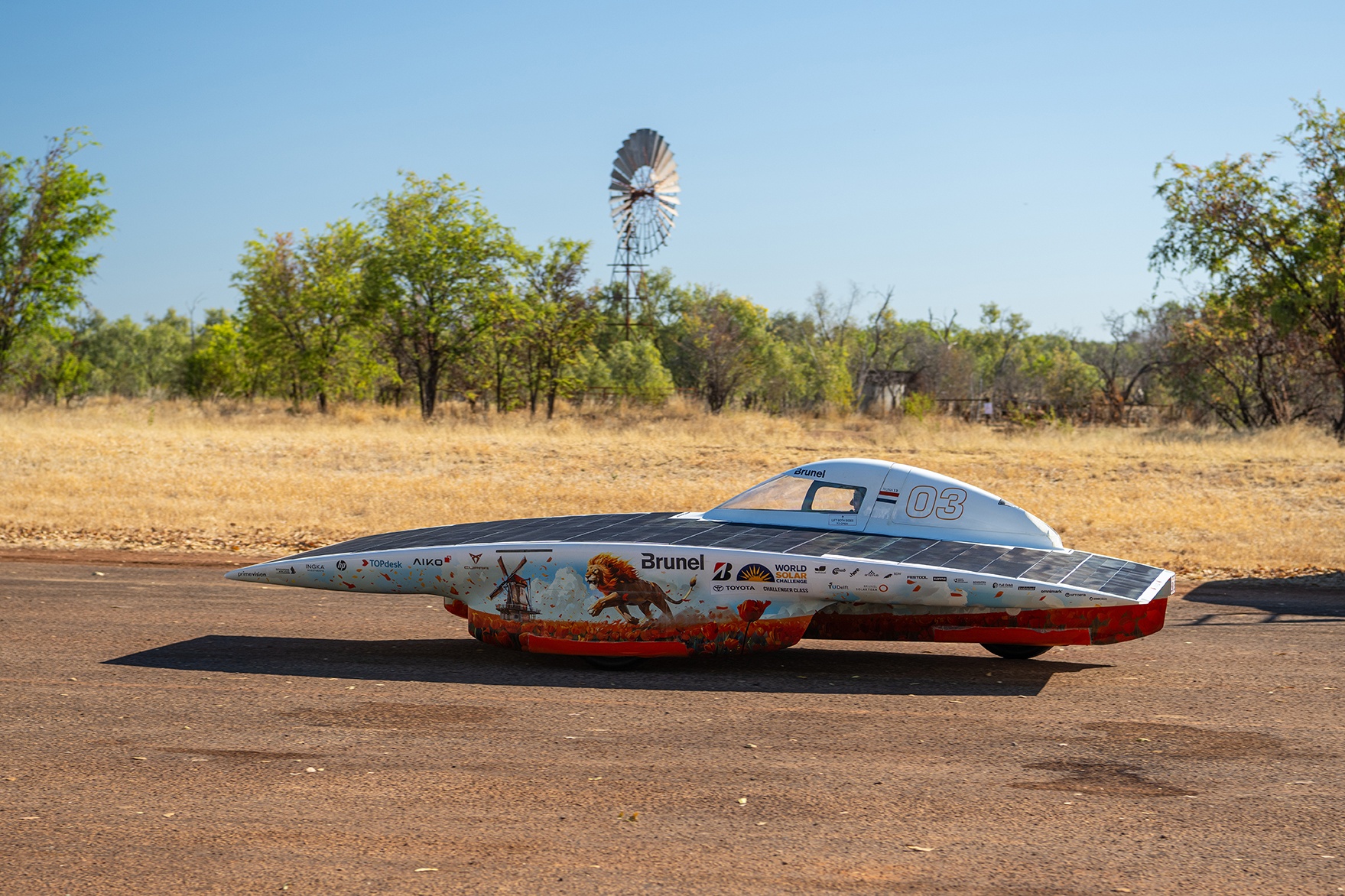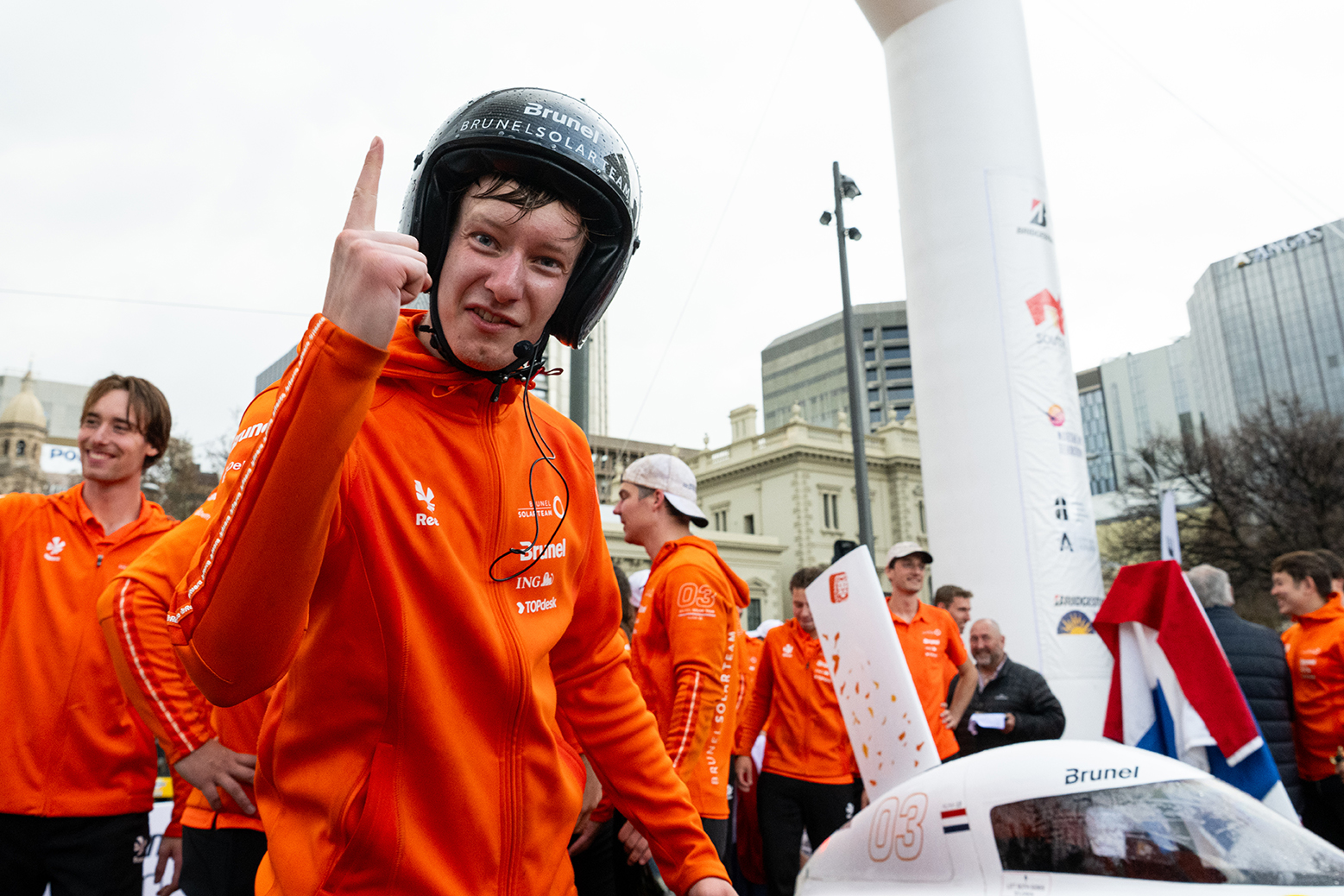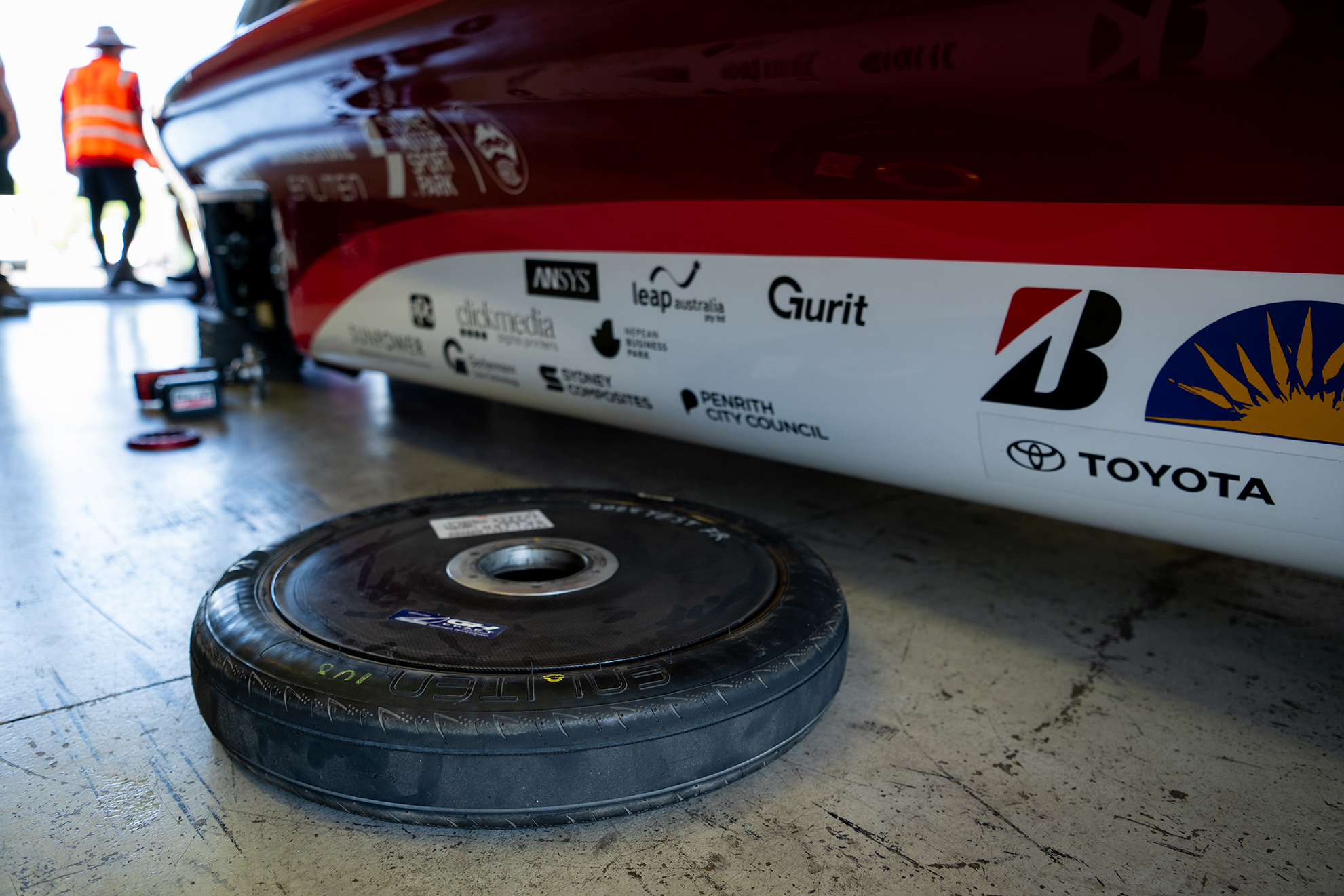2025-09-26 | Bridgestone Team
If you’ve never watched a car make silence look fast, put the Bridgestone World Solar Challenge (BWSC) on your bucket list.
For one sun-soaked week, student-built solar racers dive south from Darwin to Adelaide, covering 3,000 km of big skies, bigger crosswinds, and the sort of energy arithmetic that would make your physics teacher smile.
This year’s edition ran 24–31 August 2025, and it delivered the usual cocktail of ingenuity and grit.

The field splits into two classes:
- Challenger: single-stage, single-seater, outright efficiency and pace.
- Cruiser: multi-seat, road-practical design with limited overnight recharging allowed.
Conceived as the world’s most audacious test of ultra-efficient EVs, the BWSC invites mainly tertiary and secondary students to design, engineer and race machines that run on sunshine.

The event exists to push the limits of technological innovation while nurturing the next wave of engineers who’ll design the cars and energy systems we’ll actually use.
Bridgestone frames the BWSC as a living expression of its E8 Commitment (Energy, Ecology, Emotion, Empowerment), using the race to co-create cleaner tyre tech and to inspire young engineers worldwide.
Powering Through The Outback

The route for the 2025 edition of the Bridgestone World Solar Challenge is the same, taking us from Darwin to Adelaide via the Stuart Highway, with 9 official Control Stops before the finish in the city.
However, 2025 also brings with it a series of regulation changes that set it apart from previous years. One of the most significant adjustments is the timing of the event.
Traditionally held in October, the challenge took place in the final week of August, coinciding with the end of the Australian winter. This shift reduces the amount of daily solar irradiation available along the route, meaning teams will have to contend with less sunlight to power their vehicles.
At the same time, the cooler temperatures ease some of the harsh conditions drivers and teams usually face under the intense summer heat.
For the first time, vehicles in the Cruiser Class will also complete the Darwin-to-Adelaide journey in a single stage, just like the Challenger Class.

When the dust settled, the podium looked familiar but hard-earned: Brunel, then Twente, then Innoptus, with Germany’s Sonnenwagen announcing itself in fourth and a Japan–Australia photo-finish for fifth.
Brunel’s win is also its eighth in event history, a truly remarkable statistic.
|
Position |
Team Name |
Statistics |
|---|---|---|
|
1st |
Brunel Solar Team (03) |
Avg 86.6 km/h Event time 34.91h |
|
2nd |
Twente (21) |
Avg 86.0 km/h Event time 35.15h |
|
3rd |
Innoptus (08) |
Avg 85.3 km/h Event time 35.41h |
|
4th |
Sonnenwagen (07) |
Avg 82.7 km/h Event time 36.56h |
|
5th |
Tokai (10) |
Avg 80.8 km/h Event Time 37.37h |
|
6th |
Western Sydney (15) |
Avg 80.8 km/h Event Time 37.39h |
|
7th |
Michigan (02) |
Avg 79.8 km/h Event Time 37.87h |
|
8th |
JUST (46) |
Avg 78.6 km/h Event Time 38.46h |
|
9th |
Eclipse (92) |
Avg 77.4 km/h Event Time 39.03h |
|
10th |
Neumann (48) |
Avg 69.1 km/h Event Time 43.70h |
|
11th |
aCentauri (85) |
Avg 67.6km/h Event Time 44.70h |
|
12th |
Chalmers (51) |
Avg 67.1km/h Event Time 45.00h |
|
13th |
Kogakuin (88) |
Avg 64.8km/h Event Time 46.64h |
|
14th |
Osaka (78) |
Avg 61.4km/h Event Time 49.19h |
|
Position |
Team Name |
Statistics |
|---|---|---|
|
1st |
VTC (25) |
Avg 68.7 km/h Event time 44.00 h |
|
2nd |
Solaride (66) |
Avg 68.6 km/h Event time 44.07 h |
|
3rd |
Onda Solare (59) |
Avg 64.3 km/h Event time 47.02 h |

Bridgestone equips teams with bespoke ENLITEN™ technology tyres with low rolling resistance and feather-weight construction, then turns the event into a development loop for sustainable materials.

Beyond the rubber, Bridgestone positions the BWSC as a platform to advance sustainable mobility and inspire the next generation of engineers and leaders.
The race builds industry partnerships and funnels alumni into EV, materials and energy roles, proof that the outback is a surprisingly effective recruitment fair.